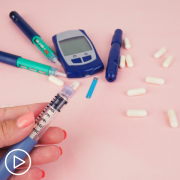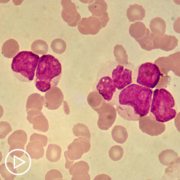How Has Acute Myeloid Leukemia Detection Evolved Over Time?
How Has Acute Myeloid Leukemia Detection Evolved Over Time? from Patient Empowerment Network on Vimeo.
How has acute myeloid leukemia (AML) evolved over time? Watch as expert Dr. Catherine Lai explains detection techniques that are used, how AML risk assessment has changed, and how test results are used in determining treatment options.
See More from Best AML Care No Matter Where You Live
Related Resources:

What Role Does Telemedicine Play in Acute Myeloid Leukemia Care? |

What Questions Should I Ask If I Suspect Acute Myeloid Leukemia? |

|
Transcript:
Sasha Tanori:
Dr. Lai, early on before my diagnosis, AML, many of my doctors I saw dismissed my symptoms and attributed them to me being plus-sized. Can you share with us how detecting AML has evolved over the last several years?
Dr. Catherine Lai:
Yes, and I’m sorry to hear that, but what I would say about the diagnosis is that how we diagnose patients with AML, unfortunately, hasn’t changed significantly in the sense that we still have to rely on our standard techniques with the bone marrow biopsy. But what I would say is that the technology for how we risk-stratify patients and subsequently treat patients has improved because we have a better understanding of the molecular characteristics of AML now, and so it has helped us in terms of being able to identify more targeted treatments, where patients are more likely to respond and help us with both our short-term and our long-term plan.










